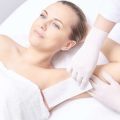1. Introduction to Wrinkle Reduction Approaches in Great Britain
In recent years, the pursuit of wrinkle reduction has become increasingly popular across Great Britain, reflecting both a growing awareness of skincare and a desire to age with confidence. Britons are now more invested than ever in maintaining a youthful appearance, whether for personal satisfaction, professional reasons, or simply as part of a holistic approach to well-being. This surge in interest is not merely a fleeting trend; rather, it’s a reflection of the British public’s openness to innovation and self-care, balanced by a uniquely pragmatic outlook.
The motivations behind seeking wrinkle reduction treatments vary widely. For some, it’s about feeling comfortable and empowered in their own skin. For others, it’s an effort to keep pace with the demands of modern life or to counteract the effects of environmental stressors such as the unpredictable British weather. As a result, the market has responded with a plethora of options—from advanced at-home devices and topical creams to sophisticated clinic-based procedures led by trained professionals.
This article will explore how these two main strategies—at-home and clinic-based wrinkle reduction—are shaping the choices of people across England, Scotland, Wales, and Northern Ireland. We’ll delve into what makes each approach appealing within the British context, considering cultural attitudes towards beauty and self-care, as well as practical factors like accessibility and cost. Whether you’re contemplating your first anti-ageing purchase or weighing up professional treatments, understanding these approaches can empower you to make decisions that suit your lifestyle and aspirations.
2. At-Home Wrinkle Reduction Methods
In Great Britain, at-home wrinkle reduction methods have become increasingly popular, offering convenience, privacy, and affordability to those seeking to maintain a youthful appearance without the commitment of clinic visits. British consumers often turn to a variety of over-the-counter (OTC) products and beauty gadgets, drawn by ease of access and the promise of gradual improvement.
Popular At-Home Strategies in the UK
Many Britons rely on daily skincare routines featuring anti-ageing creams, serums, and masks designed to target fine lines and wrinkles. These products typically contain active ingredients such as retinol, hyaluronic acid, peptides, or antioxidants. The appeal lies in their non-invasive nature and ability to fit seamlessly into busy lifestyles—no appointments or recovery time required.
Common At-Home Products and Devices
| Category | Examples | Main Benefits | Typical British Preference |
|---|---|---|---|
| Creams & Serums | Retinol night cream, Vitamin C serum | Smooths skin texture, boosts collagen production | Widely available in high street chemists like Boots and Superdrug |
| Beauty Devices | Microcurrent facial toners, LED light therapy masks | Stimulates skin renewal, enhances product absorption | Growing trend among tech-savvy consumers; often discussed in British beauty magazines |
| Sheet Masks & Patches | Hydrogel eye patches, collagen sheet masks | Quick hydration boost, targets specific areas | Favoured for self-care evenings and pamper nights at home |
The Appeal to British Consumers
The allure of these at-home solutions is rooted in their flexibility and discretion. Many people across the UK appreciate being able to address skin concerns privately, especially with the rise of remote working and social media influence. Additionally, the British market has seen a surge in brands touting “clean,” cruelty-free formulas—values that resonate strongly with local shoppers.
While results from at-home methods may be more subtle or take longer compared to clinical treatments, they empower individuals to take control of their own skincare journey. Ultimately, the widespread adoption of these strategies reflects both the practical mindset and self-reliant spirit characteristic of British culture.

3. Clinic-Based Wrinkle Reduction Procedures
Across Great Britain, clinic-based wrinkle reduction procedures remain a popular choice for those seeking visible, lasting results under expert supervision. In renowned British clinics from London to Edinburgh, professionally-administered treatments such as injectables (like Botox and dermal fillers) and advanced laser therapies are widely accessible. These procedures are performed by trained practitioners who adhere to stringent UK health and safety standards, ensuring both efficacy and patient well-being. Injectable treatments offer rapid improvement for dynamic lines and wrinkles, with results that can last several months, while laser therapies stimulate collagen production to rejuvenate skin texture over a longer period. Clinics often provide personalised consultations, allowing you to discuss your unique skin concerns and goals in confidence. Importantly, the accessibility of these procedures has grown in recent years, with many reputable clinics offering flexible appointment times and transparent pricing structures. For many Britons, the peace of mind that comes with professional oversight—combined with regulated environments and tailored aftercare—makes clinic-based strategies an appealing investment in long-term skin confidence.
Effectiveness: Comparing Outcomes
When exploring wrinkle reduction strategies in Great Britain, understanding the real-world effectiveness of at-home and clinic-based options is essential. British consumers are increasingly discerning, seeking not just convenient solutions but those proven to deliver visible results. Let’s break down what users and clinical evidence typically reveal about these two popular approaches.
Comparative Results: At-Home vs Clinic-Based Methods
At-home treatments such as topical retinoids, over-the-counter serums, microcurrent devices, and facial massage tools are widely available and often favoured for their privacy and ease of use. However, many British users report that while these methods can improve skin texture and provide mild hydration benefits, the reduction in fine lines tends to be subtle and gradual—often requiring consistent daily use over several months.
Clinic-based procedures—including Botox injections, dermal fillers, chemical peels, microneedling, and laser resurfacing—are conducted by professionals using medical-grade technology. Clinical studies and UK-based patient reviews consistently show that these treatments offer more pronounced and faster results, especially for moderate to deep wrinkles. The downside is that they generally involve higher costs, some recovery time, and the need for ongoing maintenance sessions.
Side-by-Side Comparison of Typical Outcomes
| Outcome | At-Home Strategies | Clinic-Based Strategies |
|---|---|---|
| Speed of Results | Gradual (weeks to months) | Rapid (days to weeks) |
| Degree of Wrinkle Reduction | Mild to moderate improvement | Moderate to significant improvement |
| User Satisfaction (UK Reviews) | Satisfied with convenience; less so with dramatic changes | High satisfaction for noticeable results; cost cited as a drawback |
| Longevity of Effects | Short-term unless maintained rigorously | Longer-lasting per treatment; periodic top-ups needed |
| Risk & Side Effects | Low risk if used correctly; minor irritation possible | Moderate risk (e.g., bruising, swelling); rare complications if performed by qualified practitioners |
A Balanced Perspective for British Consumers
The choice between at-home and clinic-based wrinkle reduction ultimately depends on your goals, budget, and appetite for risk or downtime. For those seeking noticeable improvements with professional oversight, clinic treatments in reputable UK clinics may be the way forward. Conversely, if you prefer a gentle approach with minimal commitment, starting with at-home products could be more suitable—though patience will be key. Whatever your decision, remember that consistency and a tailored skincare routine are vital to achieving and maintaining youthful-looking skin.
5. Safety and Risk Considerations
When comparing at-home wrinkle reduction options with clinic-based treatments in Great Britain, safety must be a top priority for every consumer. While the convenience of at-home devices is undeniably appealing, it’s crucial to understand their safety profiles. Many over-the-counter products and devices are designed to be less potent than those used by professionals, aiming to reduce risks such as burns, irritation, or allergic reactions. However, incorrect usage, lack of personalisation, or misunderstanding instructions can still lead to unwanted side effects like redness, swelling, or even longer-term skin damage.
In contrast, clinic-based treatments—ranging from injectables like Botox to advanced laser therapies—are administered by qualified practitioners under regulated conditions. This expert oversight significantly minimises the risk of complications and ensures that treatments are tailored to your unique skin type and medical history. Moreover, British clinics must comply with rigorous regulatory standards set by organisations such as the Care Quality Commission (CQC) and the General Medical Council (GMC), offering an additional layer of reassurance for patients seeking wrinkle reduction solutions.
It’s also essential for British consumers to recognise the importance of regulation in both settings. While at-home products sold in the UK must meet certain safety standards, they often lack the robust testing and professional guidance provided in clinical environments. Choosing reputable brands and consulting with a skincare expert—even when considering DIY approaches—can help mitigate risks.
Ultimately, whether you prefer the privacy of home treatments or the expertise found in clinics across Great Britain, understanding safety considerations empowers you to make informed choices. Prioritising regulated solutions and seeking expert advice when needed will not only protect your well-being but also enhance your confidence as you navigate wrinkle reduction strategies tailored for British lifestyles.
6. Cost, Convenience, and Cultural Preferences
When considering wrinkle reduction strategies in Great Britain, the interplay of cost, convenience, and cultural preferences significantly shapes the choices individuals make.
Cost Considerations
The financial aspect remains a decisive factor for many Britons. At-home wrinkle reduction methods—such as topical creams, serums, or handheld devices—are generally more affordable upfront and over time compared to clinic-based treatments like injectables or laser therapy. The NHS rarely covers cosmetic procedures, making out-of-pocket expenses for clinical options a meaningful barrier for some. For those on a budget or preferring gradual results, at-home solutions are naturally attractive.
Convenience and Practicality
British lifestyles often prioritise practicality and efficiency. At-home treatments offer flexibility: they can be used at any hour, fitting seamlessly around work schedules or family commitments. There is no need to travel or book appointments, which suits those with busy routines or who live outside major urban centres where clinics may be less accessible. Conversely, clinic-based treatments typically require scheduled visits and potential recovery time, which can be inconvenient for those with demanding diaries.
Cultural Attitudes in Britain
The British approach to beauty is frequently characterised by subtlety and modesty. Many prefer understated improvements that do not draw overt attention; this aligns well with at-home products promising natural-looking results over time. There remains a degree of reservation towards visibly dramatic changes or openly discussing cosmetic procedures—a reflection of traditional British reserve. However, attitudes are gradually shifting as younger generations embrace transparency regarding aesthetic treatments and seek faster results from professional interventions.
The Balance of Choice
Ultimately, the decision between at-home and clinic-based wrinkle reduction is shaped by an individual’s budget, lifestyle needs, and comfort with prevailing cultural norms. While cost-effective home treatments are appealing to those seeking discretion and convenience, professional options attract those desiring immediate or more pronounced outcomes. Understanding these nuanced factors helps illuminate why Britons might gravitate towards one strategy over another—and empowers individuals to make informed decisions that best suit their personal values and circumstances.
7. A British Perspective: Making the Right Choice
When it comes to selecting the most appropriate wrinkle reduction strategy in Great Britain, a thoughtful approach rooted in personal values and lifestyle is essential. The British ethos often champions subtlety and authenticity, so choosing between at-home and clinic-based treatments should reflect not just cosmetic goals but also your comfort and confidence.
Assessing Your Individual Needs
First, consider your primary motivations. Are you seeking gentle maintenance or a more dramatic transformation? At-home options such as topical creams or non-invasive devices may suit those who prefer gradual, natural-looking results without the need for appointments or downtime. In contrast, if you desire more pronounced changes and are comfortable with medical environments, clinic-based procedures like injectables or laser therapies could offer more noticeable effects.
Evaluating Practicalities and Preferences
Your lifestyle plays a significant role in this decision. Britons value convenience—if your schedule is hectic, at-home methods can be seamlessly integrated into daily routines. However, if you appreciate expert guidance and peace of mind from professional oversight, clinics provide tailored consultations and follow-up care that many find reassuring.
Budget Considerations
Financial factors cannot be overlooked. At-home products tend to be more affordable upfront, while clinic treatments represent a higher investment but may deliver longer-lasting outcomes. Reflect on what feels sustainable for you, both financially and emotionally.
Cultural Attitudes and Confidence
The British approach to aesthetics often emphasises confidence over perfection. Whichever method you choose, ensure it aligns with your self-image rather than external pressures. Seek reputable brands or clinics registered with UK health authorities for safety and efficacy, and never hesitate to ask for testimonials or evidence of results.
Empowering Your Decision
Ultimately, the best choice is one that empowers you to feel like your best self. Take time to research, consult trusted professionals when necessary, and listen to your instincts. By aligning your wrinkle reduction strategy with your unique needs and values, you can embark on this journey with assurance—reflecting the understated yet resolute confidence that defines the British spirit.


